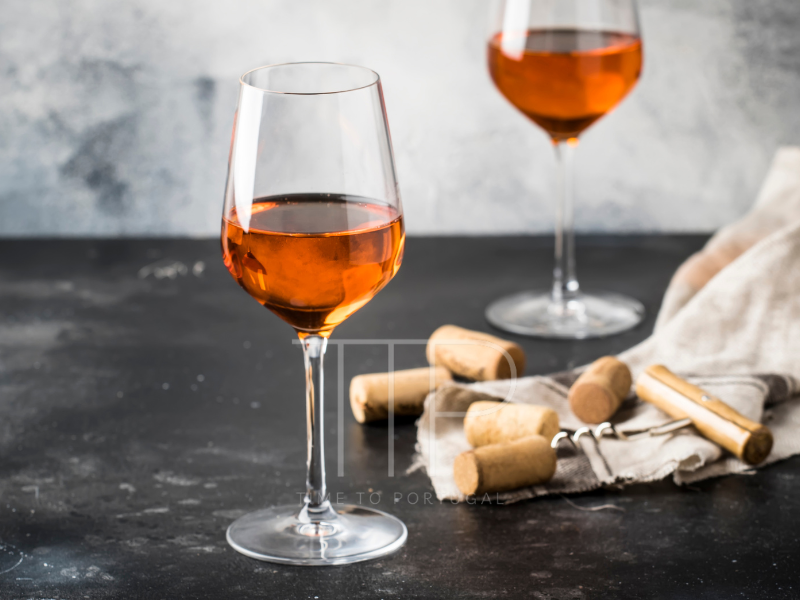Known as orange wine for its orange hue, white wine can be the ideal companion for comforting autumn dishes.
Winemakers and sommeliers explain the secrets of this type of wine, which is a worldwide trend
“An orange wine is nothing more than a tanning white,” explains winemaker Diogo Lopes. In a broad sense, it’s a white wine, “but made in the style of a red wine”, adds Manuel Moreira, trainer, wine critic and sommelier. In other words, unlike conventional white wine, a process based on pressing and separating the grapes from the skins, in orange wine “the skins and other solid parts of the bunch remain in maceration (tanning) in the juice/must”, says the winemaker. The result of this specific wine making process is “that orange hue given by the anthocyanins [natural pigments] that are in the skins [of the grapes]”, continues Diogo Lopes.
An orange wine can be made from any white grape variety. “Strictly speaking, the tradition of this type of wine in Portugal is that of the Alentejo, with its “talha” wines. The white “talhas” are, precisely, pure Orange Wines,” says Diogo Lopes. As for the contact time between the skins and the must, “it differs from winery to winery, depending on the winemaker’s idea and the profile he wants for the wine,” he says.
Therefore, orange wine has nothing to do with palhete, which is made from a mixture of red and white grapes, “mostly red and which usually takes on a darker pink hue,” warns Diogo Lopes. The same applies to claret, “made from red grapes, but with little skin contact, resulting in a wine with an open and very light color.
As well as a more orange hue, skin contact also gives the wine “body, tannins and greater intensity of flavor”, among other “specific attributes, such as astringency, bitterness, undefined aromas”, explains Manuel Moreira. So not only can you say that it’s a wine that rhymes with autumn, represented by its orange and brownish hues, but also with the season’s dishes.
In this context, the sommelier invites you on a journey of wine pairings, following the recipes of the season in four regions of the country, with “Guisado de míscaros ou tortulhos”, from Alto Tâmega, “Coelho bravo frito”, from Ribatejo, “Cozido de grão com vagens à alentejana”, from Alentejo, and “Perdiz cerejada”, from Algarve. But if the challenge is to broaden your horizons at the table, Moroccan, Indian and Asian food and the spicy meat dishes of Mexican cuisine are good company for white wine.
With regard to wine pairings, Manuel Moreira explains that the structure of orange wine “helps to balance the juiciness” conferred by proteins or carbohydrates. “On the other hand, the dryness, astringency and acidity [of orange wine] balance out the fatty elements.” In this case, the sommelier gives the example of oils, cheeses, intramuscular fat or confit.
Given the presence of products with a high acidity content, such as “tomatoes, wine, vinegar, citrus fruits, yogurt and other fermented dairy products, kimchi, the acidity of orange wine acts as a bridge with these components,” says Manuel Moreira. In short, a tanning white is a gastronomic wine, in other words, “it’s a wine to accompany food. Drunk on its own, it can be imposing and fatiguing,” says the sommelier.

